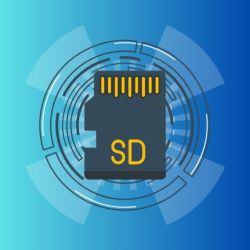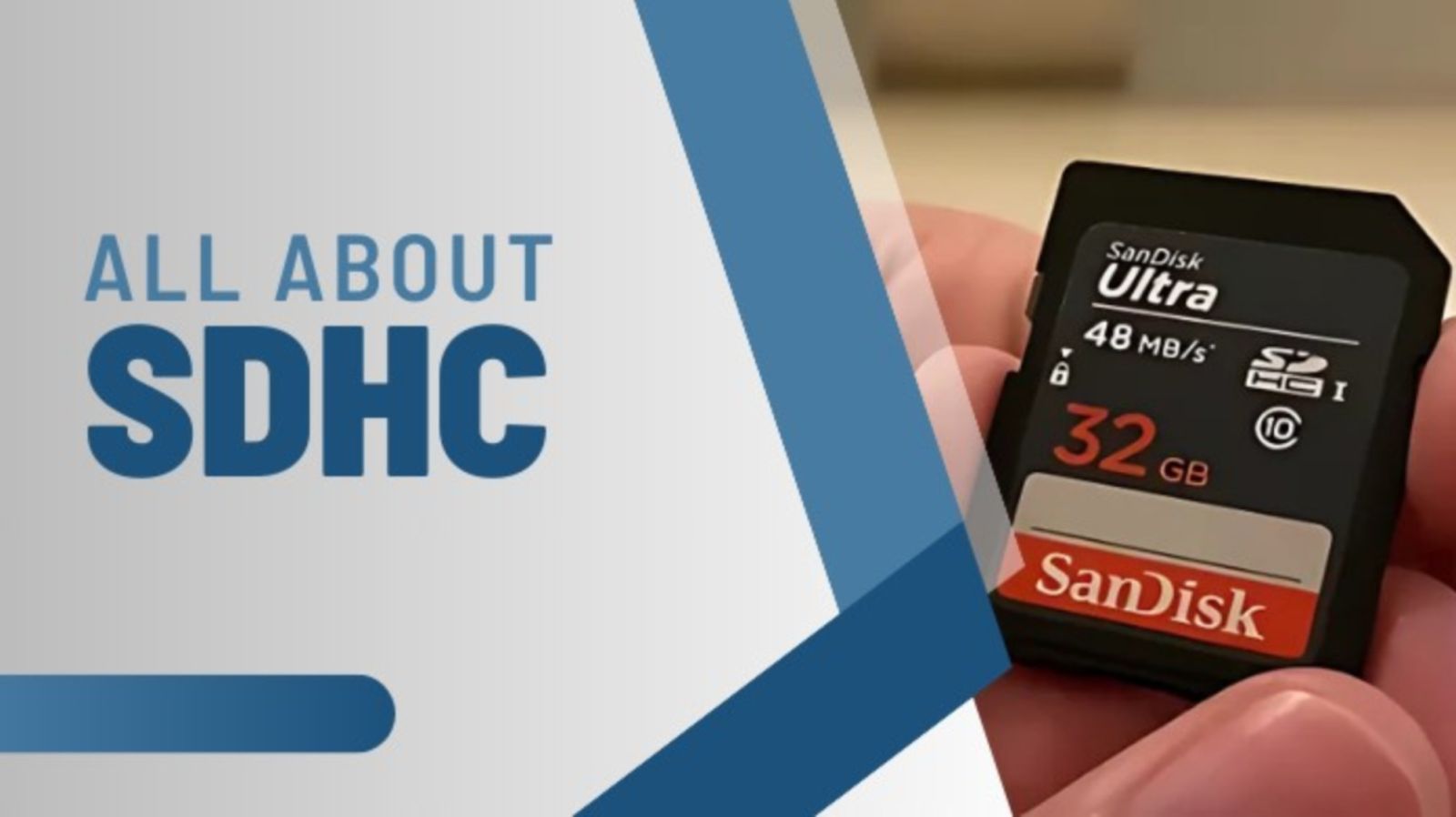SDHC Explained - Everything You Need To Know
Are you looking for a stable storage solution, and does an SDHC card satisfy your needs? If so, then keep reading this article and gain all the info you need to know.
SDHC (Secure Digital High Capacity) cards offer increased storage space for high-resolution photos, HD videos, and applications. SDHC cards, which range in capacity from 4GB to 32GB, provide faster data transmission speeds than traditional SD cards, making them suitable for modern digital devices.
To ensure optimal performance, make sure your card is properly formatted. Using an SD card formatter prepares your SDHC card for seamless use across several devices.
In this article, we'll quickly go over what SDHC cards are, how they function, and why they're an excellent option for boosting your device's capacity.
What is an SDHC Card?
SDHC (Secure Digital High Capacity) memory cards offer much greater storage than the original SD (Secure Digital) card standard. SDHC cards were created to satisfy the increasing storage requirements of modern devices, with capacities ranging from 4GB to 32 GB.
Unlike standard SD cards, which have a maximum capacity of 2GB, SDHC cards use the FAT32 file system, allowing them to store larger files such as high-definition films or high-resolution images.
SDHC cards were developed in response to the need for bigger capacity memory cards to meet the rapid rise of digital content, particularly since photo and video file sizes have expanded considerably due to developments in camera and smartphone technology.
SDHC vs. Standard SD Cards
The primary distinction between SDHC cards and ordinary SD cards is their storage capacity:
- Standard SD cards: Typically, the capacity ranges from 128MB to 2GB. These cards employ the FAT16 file system, which limits the size of each individual file.
- SDHC cards: Provide much greater capacities ranging from 4GB to 32GB by leveraging the FAT32 file system, which allows larger files and more efficient storage.
Another important distinction is in the speed class. SDHC cards frequently include a Speed Class rating (varying from Class 2 to Class 10), which specifies the minimum write speed for data transfer.
A Class 10 SDHC card, for example, ensures a minimum write speed of 10MB per second, making it ideal for high-definition video recording and burst photography.
Understanding Speed Classes of SDHC Cards
Speed class is critical when selecting an SDHC card, especially for certain workloads such as video recording or professional photography. Here's an overview of the various speed classes:
- Class 2: Minimum write speed of 2MB/s - Compatible for standard-definition video capture.
- Class 4: Minimum write rates are 4MB/s and 6MB/s, respectively, making them appropriate for HD video recording.
- Class 10: Minimum write speed of 10MB/s - perfect for Complete HD video recording, burst photography, and quick data transfers.
- UHS-I and UHS-II: These are Ultra High-Speed ratings, which enable for significantly faster read and write rates. UHS-I supports up to 104MB/s, while UHS-II supports up to 312MB/s.
When selecting an SDHC card for a camera, action cam, or drone, be sure it meets your device's speed class requirements. Using a slower card can cause missing frames during video recording or delays when taking photographs.
Device Compatibility with SDHC Cards
When selecting an SDHC card, compatibility is an important consideration. While SDHC cards are widely accepted by a variety of devices, certain older gadgets designed to solely accept ordinary SD cards may not recognize SDHC cards.
SDHC cards are generally supported by current devices such as digital cameras, camcorders, smartphones, tablets, and game consoles; nevertheless, before purchase, always double-check your device's user manual or technical specifications.
If your device is compatible, you will be able to make full use of the increased capacity and faster speeds.
For devices that support newer standards, SDXC cards (Secure Digital Extended Capacity) with capacities ranging from 64GB to 2TB may be worth considering. These cards are perfect for 4K video capture and other data-intensive applications.
Benefits of Using SDHC Cards
- Larger Storage Capacity: SDHC cards, which range in capacity from 4GB to 32GB, offer enough room for images, videos, and apps at a reasonable price.
- Faster Data Transfer Speeds: SDHC cards provide faster read/write speeds, making them excellent for HD video recording, burst shooting, and speedy file transfers.
- Widely Available and Affordable: SDHC cards are widely available and compatible with the majority of modern devices, making them an affordable storage option.
- Reliable and Durable: Many SDHC cards can endure water, shock, and extreme temperatures, making them suitable for outdoor use.
- Great for HD Video Recording: High-speed SDHC cards (Class 10+) enable continuous 1080p video recording with no missed frames.
How to Format and Use SDHC Cards?
To get the most out of your SDHC card, correctly format it before use. While most devices will recognize and format the card automatically, you may alternatively format it manually with built-in tools or a specialist micro SD card formatter tool for more advanced possibilities.
Here's a brief guide for formatting and using an SDHC card:
- Insert the SDHC Card: Put the card in the SD card slot on the smartphone. Most gadgets, such as phones, tablets, and cameras, can recognize the card right away.
- Format the SDHC Card: If your device prompts you to format the card, confirm the operation. This step guarantees that the card is configured to work effectively with your device. Formatting deletes all existing data, so create a backup of any files before proceeding.
- Transfer Files: After formatting, your SDHC card is ready to hold files. You can upload photos, videos, programs, and other files directly to the card. To transmit data more quickly, Connect the SDHC card to your computer using a USB card reader for faster data transfers.
- Maintain Performance: To keep your SDHC card working at peak performance, verify and format it a frequent intervals.
Applications of SDHC Cards
SDHC cards are utilized in a wide range of devices, including:
- Digital Cameras and Camcorders: Ideal for storing high-resolution pictures and full-HD films.
- Smartphones and Tablets: Apps, photographs, movies, and documents can all be saved to expandable storage.
- Gaming Consoles: Save game information, downloadable content, and upgrades.
- Action Cameras and Drones: Class 10 SDHC cards provide the dependability and speed required to record high-speed, high-definition video footage.
- Portable Media Players: Save music, movies, and various other media files for future playback.
Wrapping Up
SDHC cards are an inexpensive and efficient way to extend device capacity. They are perfect for a wide range of applications, from photography and video recording to gaming and mobile devices, thanks to their capacities ranging from 4GB to 32GB and faster data transfer rates.
Whether you're a casual or experienced user, SDHC cards provide you with the storage you need without losing performance. Before making a purchase, make sure your device is compatible and choose the speed class that best suits your needs.
This will provide you with more storage and faster, smoother data handling for all of your digital needs



